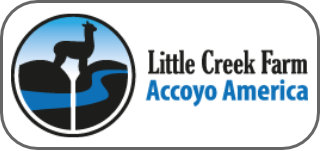- Hopefully, all breeders of alpacas know the appropriate feed for their alpacas. We know the ratio of hay to grain. We know we need to provide grass and foraging for our animals, but do we know which plants are safe foraging plants and which plants are not? We humans have been placing so much importance on the need for fresh vegetables and greens in our diet that we can certainly identify with the need to provide fresh greens for our animals. It would be easy to assume that the vegetables and greens that grow in our organic gardens are healthy and safe for our animals, after all, we eat them. This, however, is a dangerous assumption. What is healthy and safe for humans is not necessarily safe for camelids. The gardens that we routinely plant around our farms and ranches; vegetable and flower, could be deadly for our alpacas should we not be careful. It is, also, dangerous to assume that the most common trees and shrubs that surround our property are equally safe. Just because we see these plants everywhere does not mean that they are innocuous. more »
- Generally healthy, well-fed female alpacas give birth to strong and robust babies. But anyone who has raised livestock knows there are occasional problem births and babies that have a difficult time surviving shortly after birth. With birthing season upon us, it seemed only fitting to find a strong article on how to deal with problem births. There are few ecstasies in life greater than saving another living thing. Brad Smith, Karen Timm, and Pat Long were kind enough to allow the reprinting of ‘Birth to 24 Hours of Age’ from their excellent book Llama and Alpaca Neonatal Care. more »
- We have been fortunate to have experienced almost one hundred births at the Alpaca Hacienda, and every birth is just as exciting as the first. Here, we would like to cover some of the things we have learned about this most amazing, but sometimes stressful time in owning and breeding alpacas. more »
- Warming weather in Southern California and in all parts of the United States brings with it a renewed threat of tick paralysis in animals and people. Alpacas are not excluded from this group, and we have experienced first hand tick paralysis in a young male alpaca on our farm. Since then we are diligent in the control and treatment of ticks at the ranch. Tick paralysis is a somewhat uncommon but potentially fatal disease that can affect virtually all warm-blooded land animals. The illness occurs when certain species of ticks inject potent toxins from their salivary glands into the host animal. The disease was first identified in Australia in 1824. Since then, more than 60 species of ticks worldwide have been identified as toxin producers. more »
- Most normal crias will start attempting to stand by ½ hour, succeeding by 1 hour after birth. Once they are up, they start attempting to nurse (usually start trying around 1 hour, succeeding by 3-4 hours). Once the dam and cria have bonded (usually when nursing is established), start dipping the navel with iodine or chlorohexidene 0.5% (repeat 2-3 times daily for 1-2 days) and weigh the baby. Normal (“average”) alpaca babies weigh at least 12 pounds. more »
